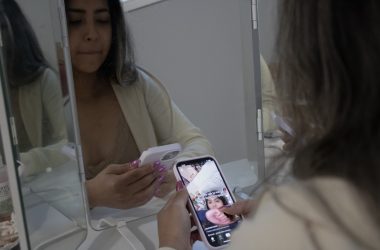The United Kingdom may soon become the first country to support the creation of a baby using DNA from three different people.
Known as the three-parent in-vitro fertilization (IVF) method, the revolutionary new process involves the mother and father of a fetus along with a female egg donor.
Though it is not widely known, three-parent IVF would allow mothers with defective mitochondria the opportunity to contribute their DNA to their child along with the use of a female egg donor.
Mitochondria, which are responsible for providing our bodies with oxygen and energy, are passed from mother to fetus, so mothers who have been diagnosed with mitochondrial diseases risk the possibility of passing unhealthy mitochondria to their children.
According to an article from BBC News, defective mitochondria can result in lack of energy, possible blindness, heart failure, muscle weakness and ultimately, death.
Contrary to what some may think, in-vitro fertilization procedures are not new.
According to an article from cancer charity Livestrong, approximately 4,000 to 5,000 births per year come from artificial insemination.
In 2012, the European Society of Human Reproduction and Embryology announced that approximately five million children have been born through procedures like IVF.
Procedures like three-parent IVF allow couples with genetic diseases to start healthy families.
Before procedures like three-parent IVF, couples who wanted to start a family had to turn to egg or sperm donation, with one parent’s DNA going unused.
Three-parent IVF would use the mother’s nucleus and the donor’s mitochondria to conceive a child.
People against this procedure argue that it could be potentially harmful to the fetus and that it is a form of genetic modification, which could be passed down through generations.
Some opponents of the procedure also worry about how DNA from three different people may affect the child and the donor.
The procedure raises other questions as well.
Concerns arise over when the parents should tell the child how they were conceived.
Also, should the egg donor who was involved in the procedure be a part of the child’s life?
Opponents raise the question of whether this procedure is absolutely necessary, given other options such as adoption and egg donation without the need of three different genetic makeups.
Like any new scientific invention, significant amounts of research and testing would need to assure safety before permanently putting a procedure like this into effect.
If it is approved in the future, this procedure could create a great opportunity for couples with genetic diseases to have children using both of their DNA.
As long as the first children conceived using this new method are closely monitored by scientists, the risks of mitochondrial defects would be minimized while allowing the
DNA of the mother to be used in the reproduction process.
While three people would be involved in the procreation process, it would not mean the child has three parents. The parents of the child would be those who raise and care for the child: in this case, the husband and wife.
Just because a donor is involved in the procedure does not mean the donor would need to be involved in the child’s life.
Like the many women who donate their eggs to other women who are incapable of having children, donors do not need to become a second mother.
Although this method of procreation may not seem natural, three-parent IVF will benefit women with genetic mitochondrial diseases who want to have children.
It will also prove that with science, there is a safe way to use the DNA of two women in the reproductive process to avoid passing along any disease to the child.
Leiana Swanson is a senior kinesiology major and a contributing writer at the Daily 49er.



